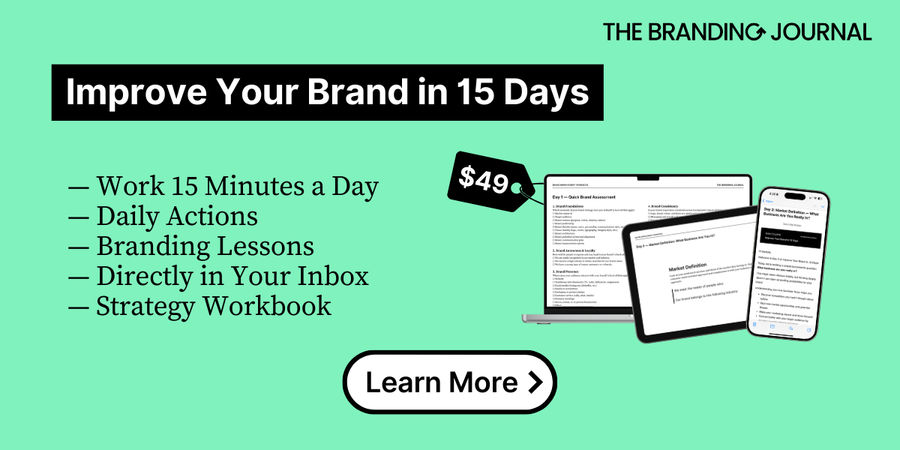When I first discovered Stack Magazines, I fell in love with the idea of receiving a surprise independent magazine each month, delivered right to my mailbox.
After signing up, I started receiving magazines I would have never picked myself — and I loved it. Some were visually stunning, others opened windows into subcultures or parts of the world I didn’t know much about. And each time, I found myself discovering new things about people and culture.
We don’t think about it enough, but independent magazines have a unique ability to explore specific interests and subcultures in depth, making them a perfect resource for understanding the world around us and crafting relevant brand strategies.
Curious about which magazines are most useful for branding professionals, I reached out to Steven Watson, the founder of Stack, and had the pleasure of asking him for his recommendations.
Because really, who better to recommend independent magazines than someone who spends every day reading and curating them?
I invite you to join us in this conversation, and I hope you’ll discover a few gems that inspire your branding work!
Proven Systems for Business Owners, Marketers, and Agencies
→ Our mini-course helps you audit and refine an existing brand in 15 days, just 15 minutes a day.
→ The Ultimate Brand Building System is your step-by-step blueprint to building and scaling powerful brands from scratch.
Origins of Stack: From Side Project to Full-Time Venture

Marion Andrivet: Steve, thanks so much for accepting this interview. To start, could you explain why you created Stack and the story behind it?
Steven Watson: Absolutely. I was working as a writer and editor on in-flight magazines — not the cool, creative ones, but very much ad-driven content tied to airline brands. By the mid-2000s, journalism was changing rapidly, and it was getting harder to make a living just through writing and editing.
I wanted to give myself some other skills. So I read a book called The Beermat Entrepreneur, which is all about how you go from sitting in a pub and talking with your friend to actually, you know, making a business. I set about trying to find some kind of ideas for businesses, and they were all based around journalism because, as I say, that’s what I did.
Now, around the same time, I got inspired by Russell Davies. He is a brand strategist and a writer, and he runs this thing called Interesting. Every year, he has a group of people who get together and talk about stuff they find interesting.
When he was organizing the first one, he wrote this blog post where he said, “A good way to stay interesting is to read a different magazine every week because they represent these constellations of ideas and experiences, and you can just sit at home and let them come to you.” I remember thinking, oh, that’s a really nice idea—magazines as a way of being interesting.
Inspired also by a friend’s subscription to a monthly surprise T-shirt delivery, I combined these ideas: magazines as a way to be interesting, plus the excitement of monthly surprise delivery.
“Inspired also by a friend’s subscription to a monthly surprise T-shirt delivery, I combined these ideas: magazines as a way to be interesting, plus the excitement of monthly surprise delivery.”
Steven Watson, Founder of Stack Magazines
I wrote a business plan in 2008. It started as a hobby while I kept my day job at a fun, creative agency doing really fun, challenging work.
Then in 2012, my wife had our first child, and all of my spare time disappeared. I was faced with a choice—you’ve just had a baby. By this point, I wasn’t working at the in-flight magazine place anymore. Through running Stack, I’d actually ended up getting a job working for a creative agency. And we were doing really fun, challenging work.
I think I was doing that two days a week and doing Stack three days a week, but there’s no way either of those jobs was really two or three days a week, and it was killing me a little bit.
But when my first child was born in 2012, all of my spare time disappeared. So basically, I got to where I said to my wife, “Look, we’ve just had a baby. I am going to die if I keep trying to do this amount of work. Maybe I need to give up my job and try to do this thing I’ve been doing on the side,” and she said, “Yeah, go for it.” That was it.
How Stack Works: Curating Surprises for Readers
Marion: So let’s talk a bit about how Stack works. Subscribers pay a fixed monthly fee and receive a surprise magazine delivered directly to their mailbox. I’m curious, how do you collaborate with the various independent publishers? Do you have exclusive partnerships, or how do you choose new publishers for each delivery?
Steven: I don’t work exclusively with any publisher. Stack’s purpose is to help readers discover new magazines and help magazines find new readers — exclusivity would contradict that.
So I maintain a calendar about six months ahead to plan what we send. Our subscribers consistently say the biggest appeal is surprise. More than quality or price.
For instance, if we sent a queer nightlife magazine last month, I avoid similar themes immediately after, to keep the selections fresh.
Most independent magazines publish once or twice a year, so planning with these constraints makes the year’s selections naturally varied and exciting.
Why Independent Magazines Matter for Branding Professionals
Marion: Yes, and I think what’s really interesting about what you offer is that you get to read things you would never read otherwise. Sometimes it’s from a part of the world you don’t know, or a subculture you’re unfamiliar with. These unique viewpoints are often missing from mainstream media, but they are crucial for brand strategists and creatives wanting fresh insights. What are your thoughts about this?
Steve: Yes, and I guess there are two things I’d say first before we talk about specific magazines. One is that there are loads of problems with these magazines. It’s really difficult to make them into a sustainable business. Not impossible, but difficult. Part of that is about reach. It’s tough for these magazines to break through and reach enough people to become sustainable businesses. That’s the problem side of it.
The real benefit side, though, is that because independent magazines are not trying to reach a wide audience, they focus on connecting with a really small and specific group. So, for brand strategists or anyone looking for a fresh perspective on the world, these magazines do something really well: they show a unique view of the world.
For example, the magazine we sent last month is called No One. Each issue travels to a different location and reports on the queer nightlife culture it finds there. So, for instance, they went to Vietnam, but this isn’t a magazine about Vietnam in general. It’s specifically about how queer culture has evolved in Vietnam. There are unique subcultures and expressions of that culture that you just don’t find anywhere else. That’s the real value.
I also think the magazine format is perfect for expressing this kind of content. Compared to a book, which can sometimes feel difficult to read and require concentration, magazines help guide you along with headlines, pictures, quotes, and other features that make the experience easier, but still give you the slow focus of the written word. So these magazines are an excellent way to dive into these subcultures.
That’s my preamble. After that, I think it depends on where your interests lie and what you’re looking for.
“For brand strategists or anyone looking for a fresh perspective on the world, these magazines do something really well: they show a unique view of the world.”
Steven Watson, Founder of Stack Magazines
Top Independent Magazines for Branding Professionals
Marion: Thanks so much Steve, and I completely agree with you. Speaking about interests, I’d like to ask you about what your independent magazine recommendations are for people working in the branding field? I’m talking about brand strategists, brand managers, but also graphic designers, creatives, and entrepreneurs.
Steven: Definitely. Here are some highlights:
Independent Magazines For Brand Strategists & Brand Managers
Broadcast (Brooklyn, USA) — For getting a fresh perspective on the world we all live in
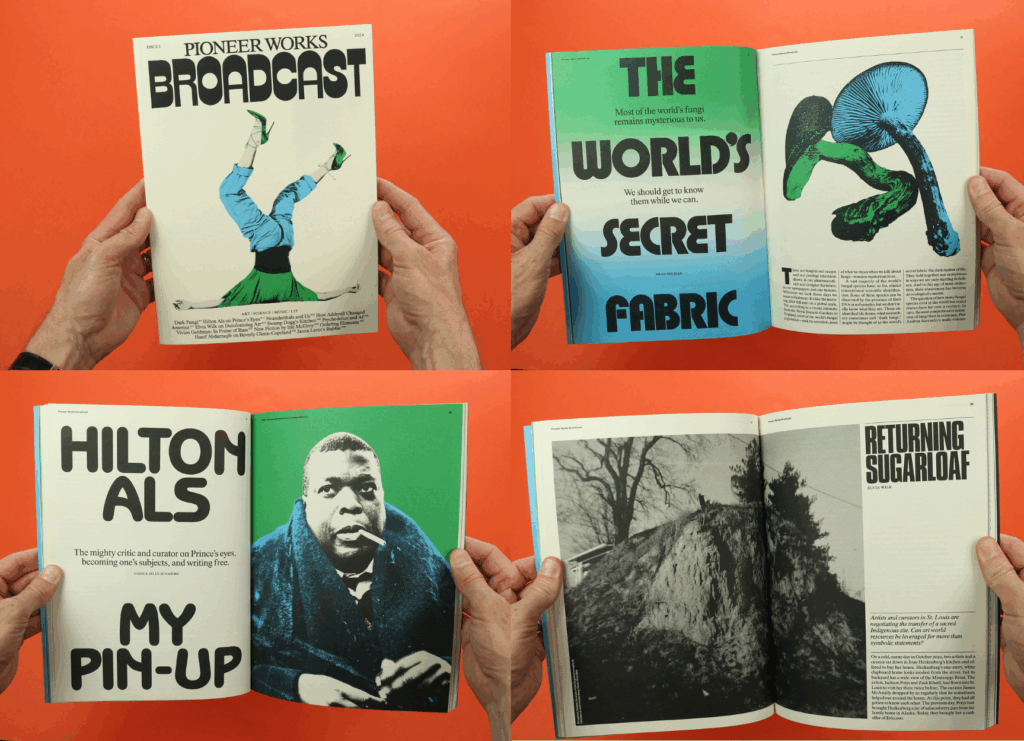
Steven: The first magazine we sent this year is called Broadcast, and it’s published by an organization called Pioneer Works in Brooklyn. It’s like a not-for-profit arts organization. The special thing about it is that it’s run jointly by artists and scientists. It operates at this kind of intersection where art and science meet, which gives it a really broad and ambitious view of the world.
Because they put a lot of money, time, and effort into it, you get crazy-quality content. You get New York Times writers writing for this magazine. Everything in there, while it can be talking about really big ideas, is really accessible and just feels friendly. It doesn’t overwhelm. So, in terms of getting a fresh perspective on the world we all live in, I think Broadcast is a really good one to go for, coming from a completely different point of view.
Solomiya (Kyiv, Ukraine) — An example of a specialized magazine for brand strategists seeking deep cultural insights and local perspectives
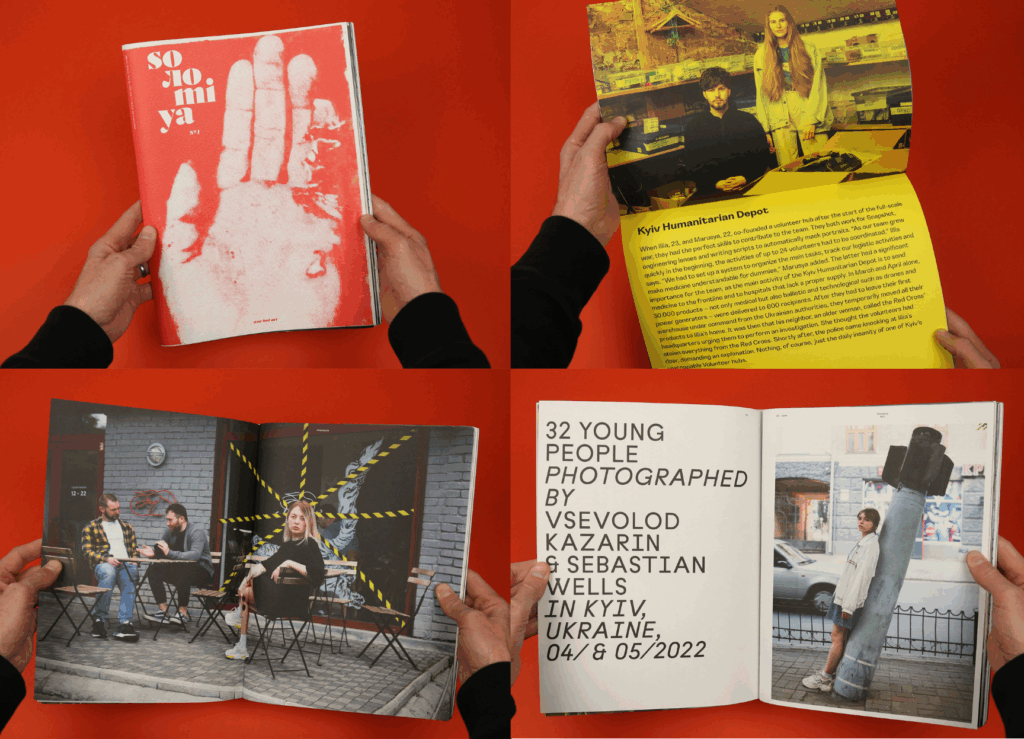
Steven: For branding professionals seeking deep cultural context and narratives about specific niches or places, I recommend looking for very specialized magazines. For example, there’s a magazine called Solomiya based in Ukraine. The first issue came out just after the full-scale Russian invasion. It’s made by young creative people in Kyiv, and they want to show their version of what’s going on. You see all these images and stories in the news, so you might think you know what’s happening. Still, when you talk to people on the ground, especially in Kyiv, it’s a very different story.
The first issue was really powerful. It had this harrowing diary entry from two young people living in a village just outside Kyiv. In the early days, the Russian army tried to take Kyiv, and the first thing those people knew was fighter planes flying over their homes. At first, they thought it would be like COVID. You just stay inside for a few days, and then it blows over. But obviously that didn’t happen. They describe the terror and how they finally got away.
The magazine also mixes this with street fashion photos of young people posing in their coolest clothes alongside sandbags and anti-tank hedgehogs. It shows that even with all this happening, people want to express themselves.
So while Broadcast looks at the world broadly, Solomiya gives you a very specific view of what’s happening in one particular context. I think that’s a fascinating example for strategists.
County Highway (USA) — For great stories and insights from all around the world, but particularly from the U.S.
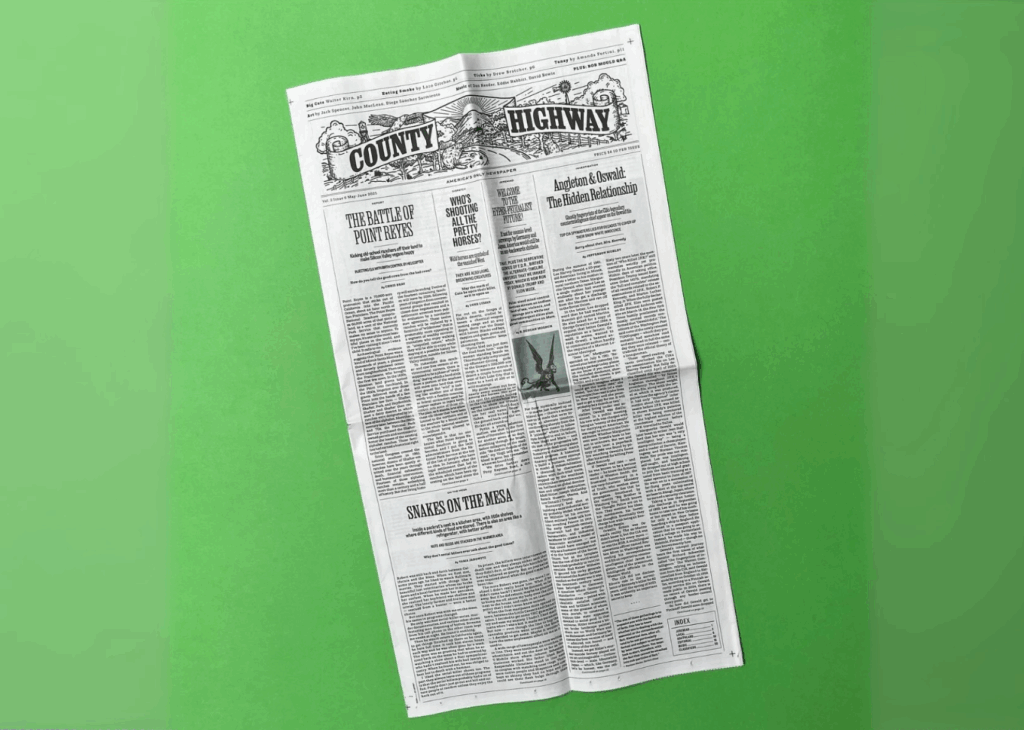
Steven: Because I know you have a lot of readers coming from the USA, there’s another interesting magazine that is specifically focused on the local culture in the USA. It’s called County Highway. The strapline is “America’s only newspaper,” which I think is quite nice. It’s also done in a newspaper format.
It tells stories, and both the look and feel and the tone of the stories have this kind of slightly small-town Americana feel to them. But you can tell they’re having fun with that, they’re playing with it. And it just tells great stories from all around the world, really — but particularly from the U.S.
I think in terms of offering a counterpoint to how we usually access information these days, it literally feels like stepping back in time. It’s much slower. I wish I could find a copy of it to show you… Yep, here we go.
So this is County Highway. And yeah, it’s incredibly dense — this is the inside. It’s run by a really small team, and they’re all about telling interesting stories. It’s perfect for strategists looking for nuanced narratives.
Independent Magazines For Creatives & Brand Designers
Playground (Vilnius, Lithuania/Stockholm, Sweden) — A Manifesto for Creativity in Europe
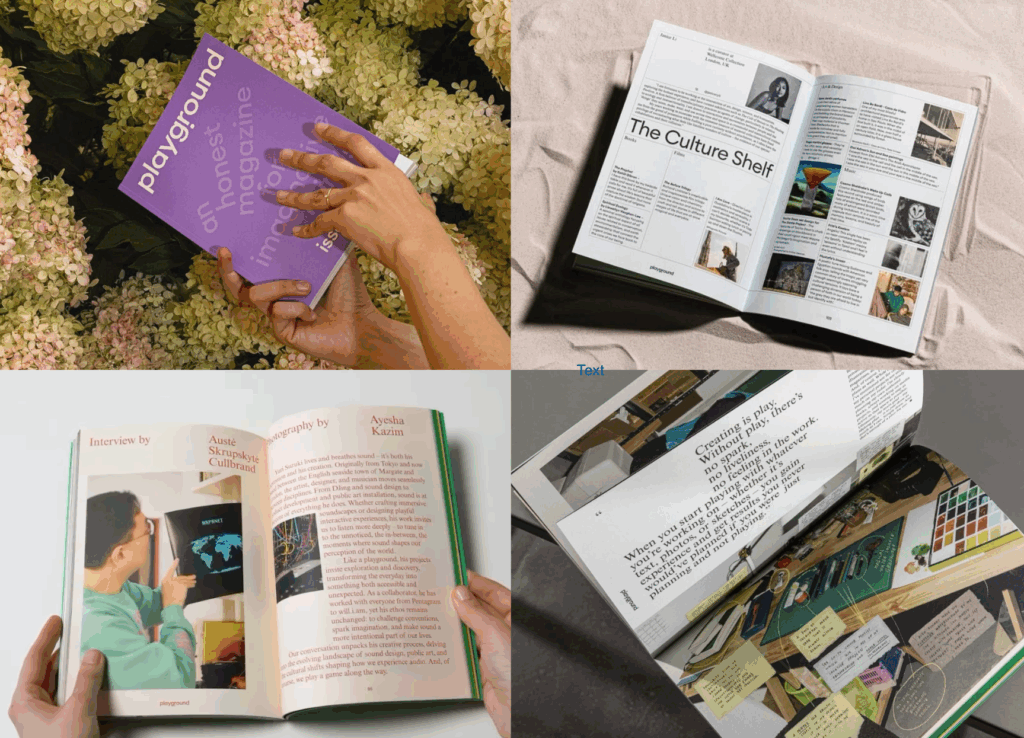
Steve: For creative people, I highly recommend this magazine called Playground, which is based between Vilnius and Stockholm. I think the latest issue’s strapline is like a manifesto for the creative industries. And it looks quite specifically at creativity in Europe, but all around Europe, from its vantage point in this kind of northwest corner.
The issues start with a survey, basically asking creative professionals about their current experience working in the creative industries. And it’s bleak. It’s pretty bleak. I can’t remember the exact stats, but basically everyone feels like they have to make compromises. They don’t feel there’s enough budget to do the work they want.
The magazine uses that as a jumping-off point to then show another way of looking at things. It gives examples of how you could do things differently. There are interviews with creative professionals talking about their work, showing the possibilities and what can be done. It’s about finding balance—not getting completely overwhelmed by how bad things are, but also not getting carried away with how wonderful things might be.
Everything is bright colors, and the photography is quite bold. I think it’s an interesting magazine because it shows both the perspective from creatives, and it also insists on a constructive, positive, solution-based view of the world. Because at the moment, I think it’s very easy for us to get lost in the difficulties we’re going through.
Eye Magazine (London, UK) — For respected graphic design commentary
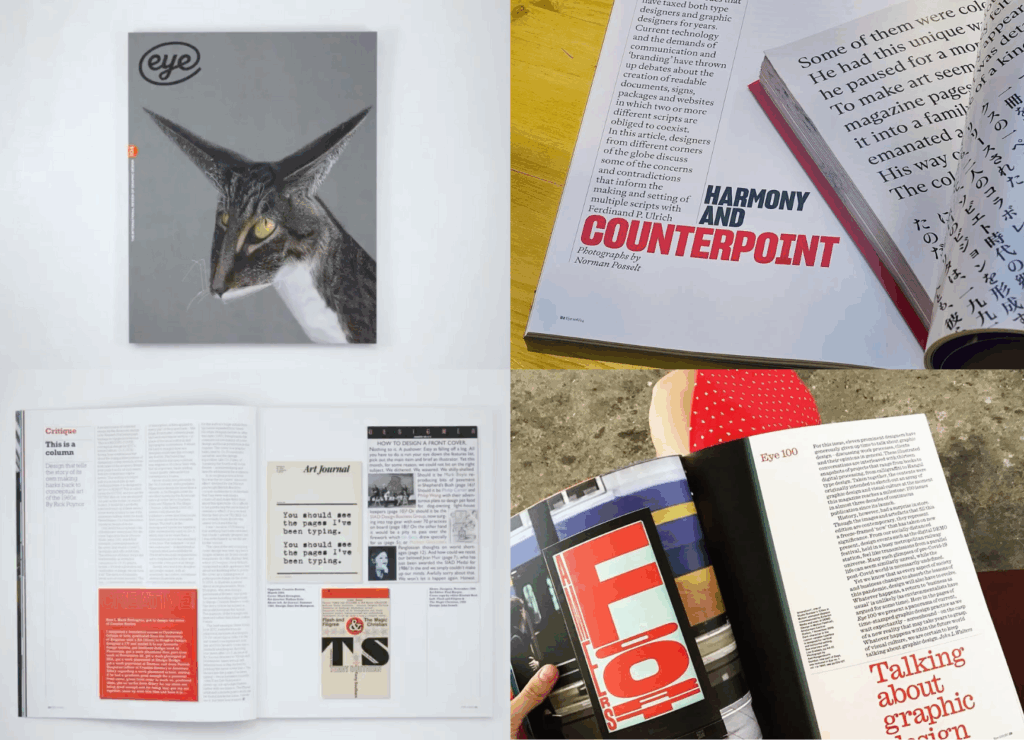
Steve: I think for graphic design, generally, as a commentary on graphic design, Eye Magazine is a great example. It’s based here in London, and its design is incredibly restrained. What’s interesting is that it’s a design magazine showcasing loads of great graphic work, so its approach is to act as a container for that. Rather than competing with the designs it features, it simply highlights them.
They do tons of typography specials and similar features. Many graphic designers see being featured in Eye Magazine as a milestone. Like, “Okay, I’ve made it”. The magazine has been around for about 20 years, and the team behind it is highly respected. They do a fantastic job, so I definitely recommend it for brand designers focused on visual identity and typography.
The New York Review of Architecture (New York, USA) — For a critical eye on all sorts of architectural, cultural, and artistic subjects
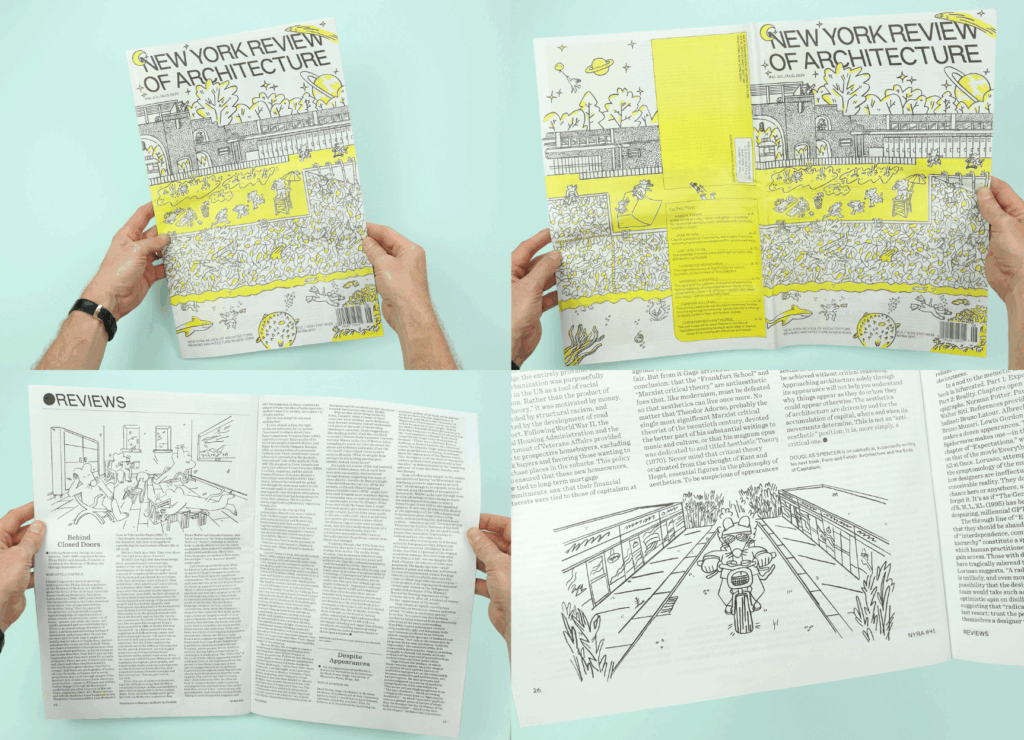
Steve: There’s a magazine called The New York Review of Architecture, which, as the name suggests, reviews architectureBrand architecture defines the role of each brand and acts as a guideline for the interrelationship between the brands in your organization. More in New York, but it goes beyond that. It casts a critical eye on all sorts of cultural and artistic stuff, which is interesting for creative professionals.
It’s published in a newspaper format, and everything about it feels big, especially the criticism. It’s almost as if writers go there because they know they’ll have the space and freedom to really let loose, to write with their most expressive and effusive commentary.
Marion: Thanks so much, Steve. We’re coming to the end of this interview, and I was wondering: Is there any magazine you’d like to add to the list? One we haven’t talked about yet?
A Last Magazine Everyone Needs To Know About?
The Paper (Wales, UK) — A one-of-a-kind magazine mixing sharp humour, heart, and cultural insight
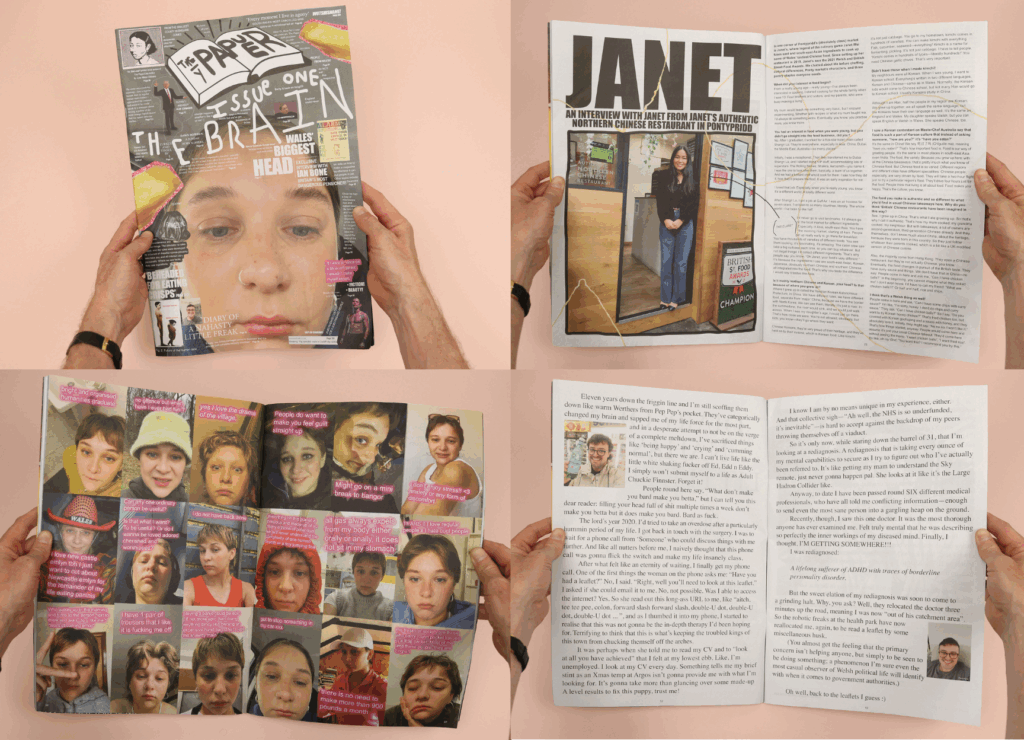
Steven: So is this like one that we haven’t mentioned so far, but that everybody really needs to know about? Yes? Alright. So, there’s a magazine called The Paper. And I definitely have that here.
This is their latest issue — and as you can see, it’s totally overwhelming. It’s big, heavy, and thick.
It’s published in Wales, and it’s all about showing perspectives from Wales, with this really kind of arch, funny tone. But at the same time, it has loads of heart and is genuinely talking about things that matter.
As soon as you feel like you’ve figured out what this magazine is all about, it flips, and you realise, oh no, it’s doing something else again. I think as a kind of punk piece of publishing, something that’s there to challenge readers while also giving them something fun to play with. It’s doing an amazing job.
So yeah, I think everyone should check out The Paper.
Marion: Thanks so much for sharing these! I’m really looking forward to going through them. I like how varied the selection is, with a mix of culture and creativity. There’s definitely some great inspiration here for anyone working in branding.
Stack’s Future Plans
Marion: Looking ahead, what are your plans for Stack?
Steven: After our recent subscriber survey, we noticed many readers want more digital content alongside print. Which is interesting because, unsurprisingly, our subscribers tend to be people who love print. That’s what we’ve always focused on. But still, we had lots of requests for digital extras.
So right now I’m trying to figure out what that could look like. On the simplest level, I send out a letter with each issue, and people respond really well to that. Someone suggested adding a QR code to the letter, linking to extra content: maybe a video from the magazine, or a podcast with the editor — something that goes a bit deeper.
That felt like an easy win, so we’re starting that from next month.
I’m also thinking more about what else we could be doing, for example, with podcasts. We’ve been doing an audio podcast for years, and recently we added video. Right now, it’s quite industry-focused — you’d listen if you want to hear people talk about making independent magazines.
But I think there’s something interesting in exploring storytelling more broadly. These magazines are full of amazing stories. So I’m exploring ways to pull some of those out into a digital format that appeals to readers as well.
Marion: Thank you so much, Steve! This has been incredibly insightful for branding professionals looking to expand their cultural horizons through independent magazines.
Steven: Thanks! It was great talking with you.
To connect with Steve, head over to stackmagazines.com, and you can follow Stack on social media, where they’re @stackmagazines on all platforms.
Proven Systems for Business Owners, Marketers, and Agencies
→ Our mini-course helps you audit and refine an existing brand in 15 days, just 15 minutes a day.
→ The Ultimate Brand Building System is your step-by-step blueprint to building and scaling powerful brands from scratch.


